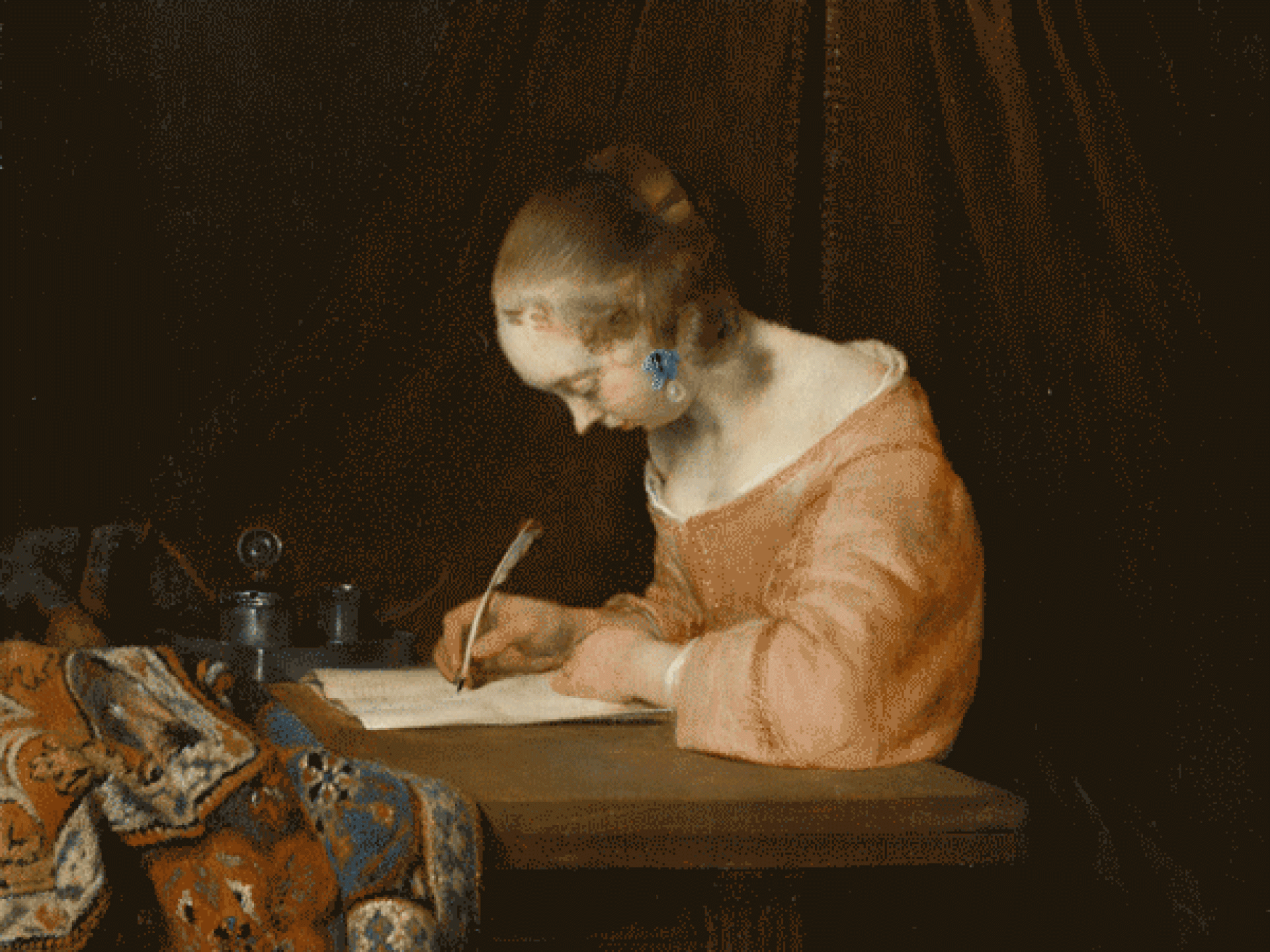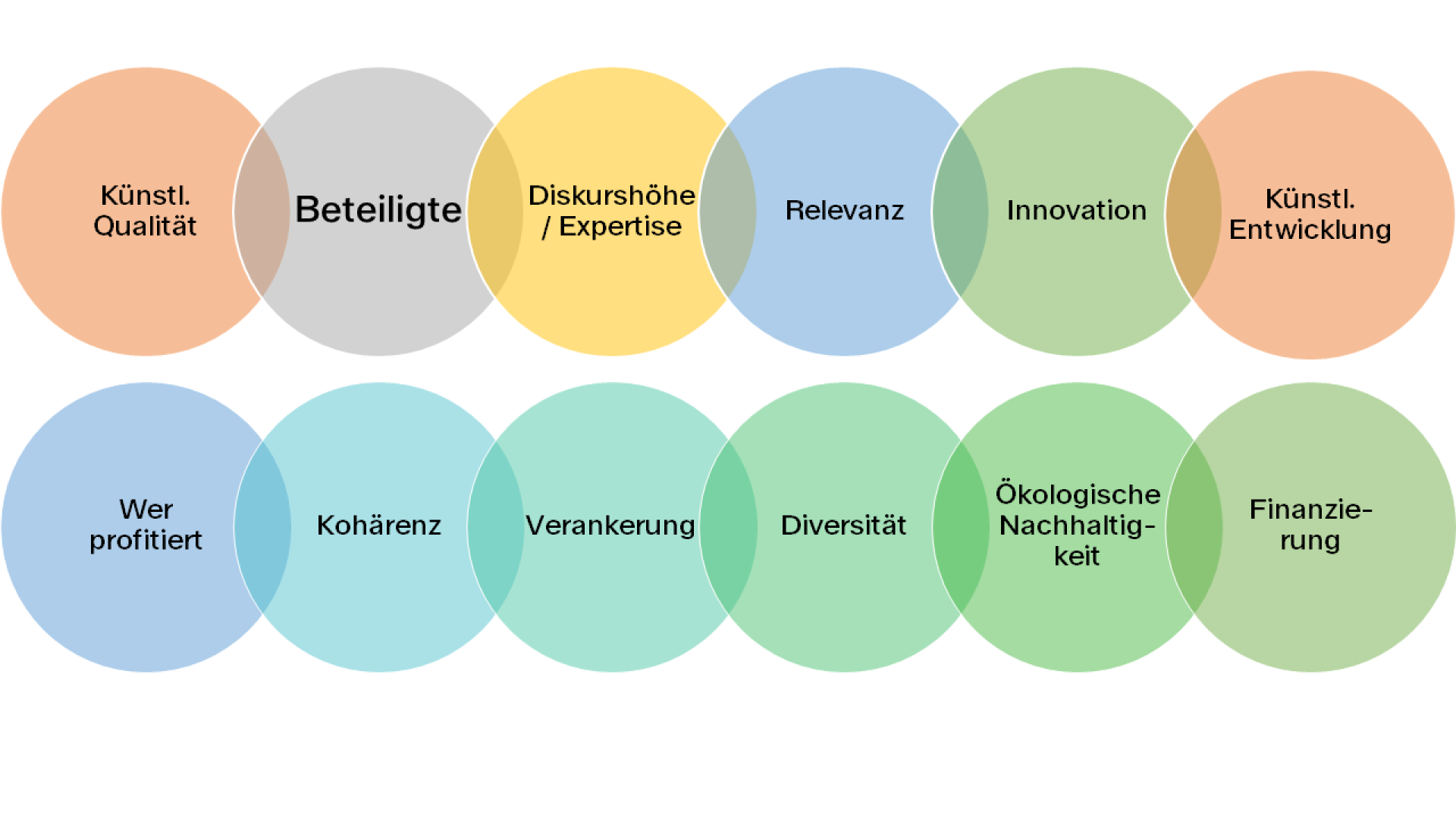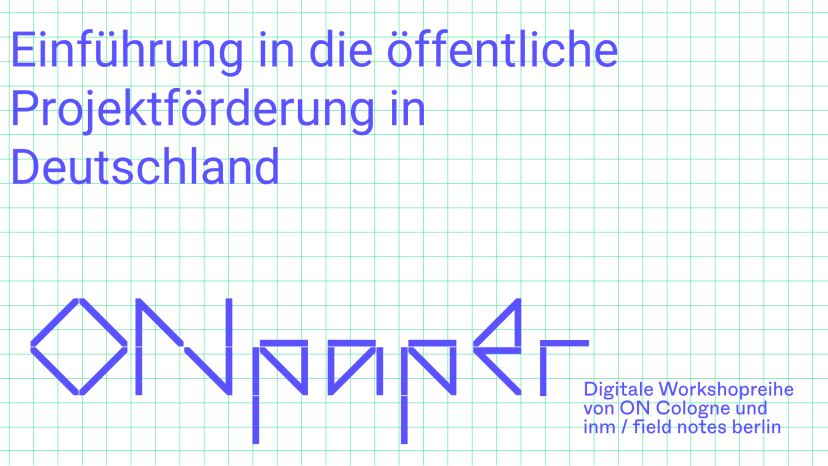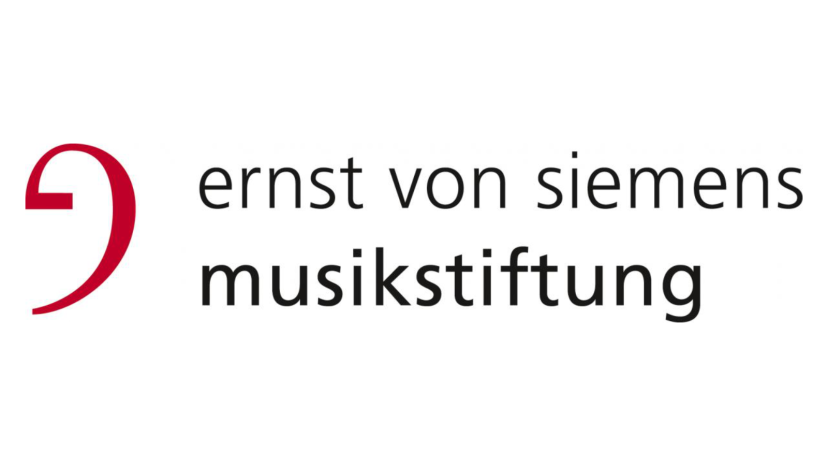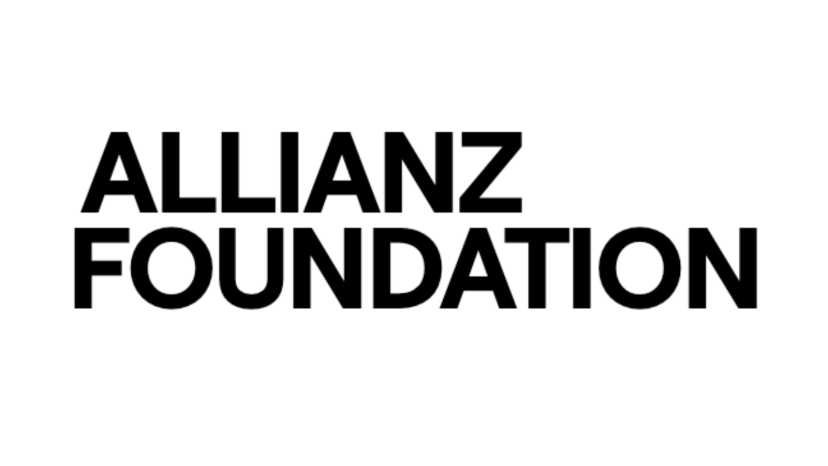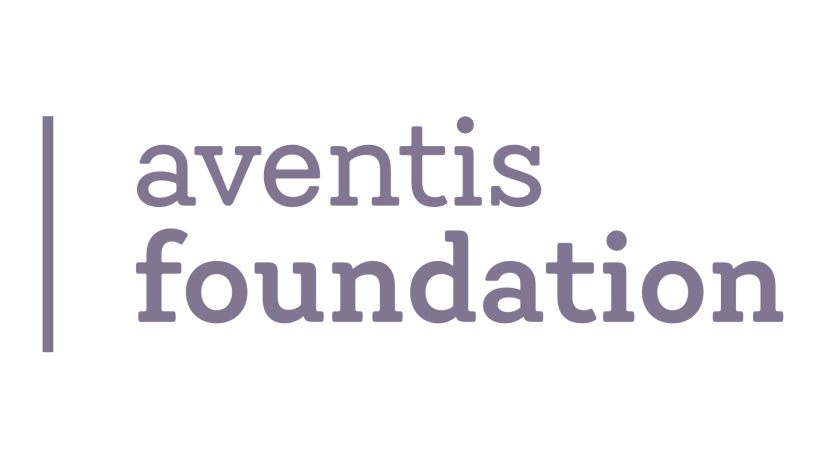The Application
An application consists of several components. In most cases, basic information on the applicant's place of residence, previous funding, etc. is requested first. This information should be compiled in advance of the submission deadline. In addition, most funding bodies require the following information / documents:
- Short description
- Full project description
- Professional / artistic background
- Music example(s)
- Confirmation of venues / letters of intent from partners
- Financial budget (see also section on financing)
It should be assumed that those reading the application know nothing about the project or the artists involved. The documents you compile for the application should contain all the information: What is not included in effect does not exist. The individual building blocks of the application will be addressed step by step below.
Short Description
As it gives the jury a first impression and an overview of the project, the short description is a crucial aspect. During the jury meeting, it also helps the jury members to quickly remember the application.
The short description should concentrate on the essentials and contain all the basic information on the artistic concept and realisation. This includes information on the format (e.g. concert, sound installation, festival), location, duration, participants and anything else that is considered important for the project.
Sometimes it can be helpful to write the short description after you have done everything else, so that all the information is developed. To gain some perspective, it may also helps to sleep on the application for a night and then write the short description from memory. Alternatively, the short description can also be written by a third party.
The short description should contain the following information:
- Who?
- Organisers
- Artists
- Partners
- What is it?
- Artistic concept
- Objective
- How?
- Type of project / event (e.g. concert, sound installation, etc.)
- Specific steps / details of realisation
- When and where?
- Location
- Time and duration
- (Target group)
- (Reason for funding)
Good example:
ABC is a festival organised by XYZ showing what can happen when musicians and composers explore the possibilities of Web3 and blockchains. For one weekend, ABC will be the home of not only concerts but also interdisciplinary workshops and panel discussions that contextualise artistic perspectives. Three newly commissioned works by composers with very different backgrounds in the field of contemporary music will take centre stage.
Bad example:
Two close friends, two great cosmopolitans, whose anniversaries we will celebrate in 2059. They are not only the pride and joy of Spanish music history but also among the most influential and multi-talented figures in the European pre- and post-war period. Having both grown up with the music of Bach and Beethoven, they have spent their entire lives in close contact with German music and culture. Composer 1, a composer who composed musically in the Brahms tradition, made his debut in Berlin, where he later taught. Composer 2 was a member of the Academy of Music and received an honorary doctorate from the university. He himself said that he drew his greatest inspiration from Hungarian folk music and the music of J.S. Bach.
Long Project Description
Every funding application has its own unique structure. Likewise, it's good if you find your own way to make your application stand out from others. What follows are therefore only suggestions and guidelines. The more experienced and comfortable applicants are, the more confidently they can deviate from them.
Generally speaking, a funding application is neither a scientific publication nor an advertising brochure – and certainly not a begging letter. When submitting an application, the aim should be to convince readers through a well-founded argument of your project.
Even the most appealing style cannot disguise weak content. Juries usually consist of active members of the scene who often have experience with submitting applications, so they can quickly recognise whether an application is solid. You don't need to know InDesign to submit a good application. What's most important is that the application is well structured and that all information is included and easily found.
Structure
Depending on the length of the application, you can improve readability with a title page, table of contents, headings or other organisational elements. It can also be helpful for the jury if you work your way from the most important points to the details. For the sake of clarity, the short description can be repeated on the first page of the long project description. Alternatively, the basic information can also be presented in bullet points on a fact sheet. Use formatting to emphasise important aspects. Images and graphics can highlight important aspects, and furthermore, they may help your application stand out so that jury members better remember it.
Style
- Tense: Applications are formulated in the present tense.
- Articulation: There are different possibilities; the easiest way to read is if you write as if it were happening. »Our goal is this and that, and we are realising it.« This also shows self-confidence, as opposed to, »In the event of funding, we would like to do this and that.«
- Rhythm: A good text is written with both short and long sentences. A text melody is created when main and subordinate clauses alternate loosely. Rule of thumb: Use very short sentences to emphasise the content. The long ones usually only explain details.
- Adjectives: Many older books on style often state that adjectives should be avoided altogether. However, as long as they are informative or add colour to the text, they can be used in moderation.
- Active instead of passive voice: A bike being taken into the garage sounds somewhat dull. But if Peter takes his bike into the garage, someone is taking action and the sentence becomes more readable.
- Specificity: The more precisely and accurately your words describe what you mean, the more comprehensible and interesting your application will be.
- Clichés: The sentence »Music is a universal language,« for example, has surely caused applications to be declined!
- Technical terminology: The correct use of specialised terms helps to present issues precisely. However, a formulation that is easy to understand should always be given preference. Only use jargon if you know exactly what you are talking about and you are sure that the jury will, too.
- Less is more: Avoid unnecessary words, sentences, details and anything else that might only distract. Make your text as concise as possible.
- These words and phrases are often unnecessary: absolutely, already, always, as is known, to a certain extent, highly, at all, by the way, definitely, extremely, for a long time, for all intents and purposes, indeed, mostly, namely, now, obviously, often, quite, really, relatively, simply, so to speak, undoubtedly, very
Content
How you develop the content or artistic idea is entirely up to you; this guide can only be about how you convey this idea. As explained at the beginning, a large number of criteria such as relevance, coherence and diversity are taken into account when evaluating an application. When writing, you should always keep these criteria in mind. It is best to imagine that you are providing your supporters on the jury with arguments for the jury meeting.
Goals and Steps
A project is a one-off endeavour. It has a specific goal and encompasses a clearly defined plan. In order to achieve this goal, certain steps must be planned and taken. The project has a beginning and an end.
Funding bodies often expect these goals and steps to be specified in the project description. Goals describe what you want to achieve, and steps describe the implementation or how you want to achieve these goals. Even if this sounds simple, goals and steps are often confused in applications. The goal is not, for example, to organise a concert with field recordings. That is the activity that should lead to the goal, which could be to raise awareness of the sounds of the environment. This goal could be achieved by presenting works with field recordings from sub-Saharan Africa.
An application's strength is also measured by whether the right steps are taken to achieve the goals. Each formulated goal should be underpinned by appropriate steps. Goals in the arts are not measurable, of course, but the steps taken in order to reach the goals can be specified very precisely.
If the goal is to achieve the highest musical quality, the steps could include extended rehearsal times with composers and the choice of a venue with excellent sound quality. If the aim is to create performance opportunities for emerging artists, the steps could include opportunities for young musicians to network with professionals. If the focus is on exploring the artistic potential of intersectional approaches in musical practice, this should also be reflected in the structure of the organisation, the decision-making process, the choice of participants and the format. If you want to introduce a particularly broad audience to contemporary compositions, you should organise the event in a participatory way and explain how you want to reach this audience.
Programme and Line-up
The selection of composers and musicians is often a decisive factor in the evaluation of an application. Particularly well-researched and innovative programmes have a clear advantage.
Be aware that by awarding composition commissions and other roles, you are allocating resources. So do your research particularly well, make use of databases, and advertise publicly to reach artists outside your circle. To make your programme more diverse, you can also involve experts and communities who face discrimination.
The application should show why you would like to work with certain musicians and composers and what contribution these artists will bring to the project. Make these reasons transparent and comprehensible for the jury.
The programme should already be in place when the application is submitted. Too many instances of »TBA« are often rejected immediately, as juries are reluctant to grant carte blanche.
As the programme and line-up are so important, these details should be clear from the application at first glance. You should also make clear which works will be commissioned as part of the project (world premiere, German premiere, etc.)
Example:
Ensemble XYZ performs
- Composer 1: »(Title of work)« for recorder, double bass and soprano (world premiere)
- Composer 2: »(Title of work)«
- Improvisation by the ensemble
- Composer 3: »(Title of work)« (world premiere)
- Composer 4: »(Title of work)«
You can also request statements on the individual works from the composers or artists. Such descriptions are usually not mandatory but may bolster your application.
Correction Round
Before the application is submitted, there should be several rounds of correction. You can give the text to a third party who ideally is not yet familiar with your project's concept. Ask them read the application for ten minutes and ask what stuck. If you subtract about 30% from this, you have a rough idea of what might stick in the minds of jury members who probably read 50 other applications on the same day. If you don't know anyone who can help you, then at least sleep on the text for one night. The next day, you will have a different perspective. Alternatively, you can read the text out loud to yourself. This is a great way to find stylistic errors and inconsistencies. Make a note of the places where you get stuck and rephrase as necessary.
Self-Introduction / Artistic Background
Juries are usually keen to find a balance between established artists and newcomers. In the case of already established artists and groups, jury members can often draw on impressions from concerts they have personally experienced in addition to the application. This tends not to be the case for younger artists, which is why information on their artistic background is all the more important to provide.
In the self-introduction or artistic background, you present yourself, your ensemble, collective, association or organisation with your objectives, convictions, working methods and references. What projects have you already realised, and with whom have you collaborated? To what extent do core values such as diversity, sustainability and innovation influence the design of your programme? What roles do your team members take on?
Ideally, your self-introduction clearly lines up with the project. A jury wants to know that you are familiar with the content and perhaps have even already done related work. You have no control over what else the jury learns about you. What you write about yourself in the application should be consistent with your internet presence.
Make sure that your self-introduction is up to date. It should contain key biographical data and information on your artistic expertise. Links to video and audio documentation of previous works don't hurt.
Very few people like to write about themselves. As the self-presentation has uses beyond the application, such as for your website, it may be worth asking a professional writer to take on the task.
Music Examples
Something many people don't realise is that the music example is the most important part of the application. The audio file being uploaded should be carefully considered. It needs to be of the highest musical quality and to represent the essence of the project. The name of the file should also be clear and explanatory.
Venue Confirmation / Letters of Intent
These almost always take longer to attain than you expect, so allow plenty of time. You can speed up the process by preparing the text or document for the partners yourself, so that they only need to sign.
Tips
Send the funding application to the respective office as early as possible. This will give the staff there the opportunity to carefully review the application and, if necessary, consult with you if the application needs to be revised or amended.
Come up with a (working) title that summarises the project well and will stick in the jury members' heads. It can be changed later.
Some committees give feedback on all projects, others only on request, and most, unfortunately, not at all. Be proactive about getting feedback from the office or jury members.
